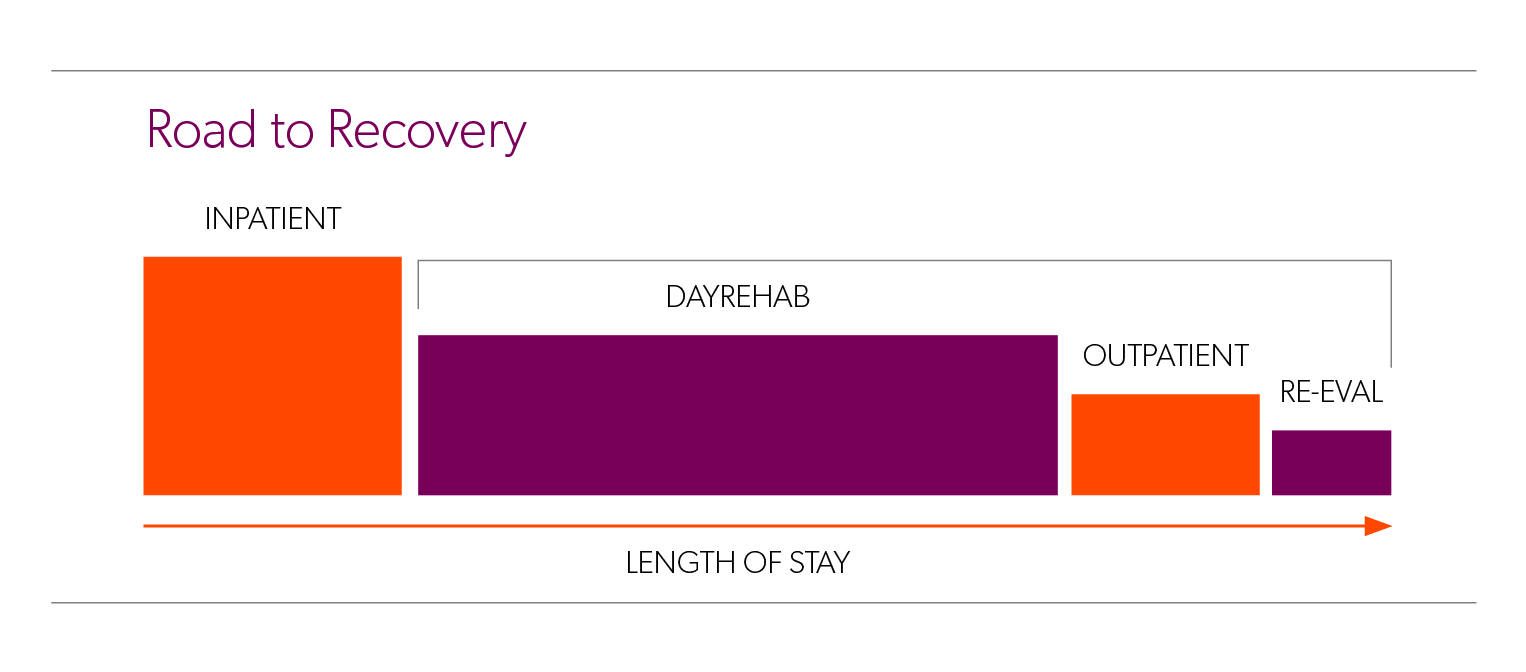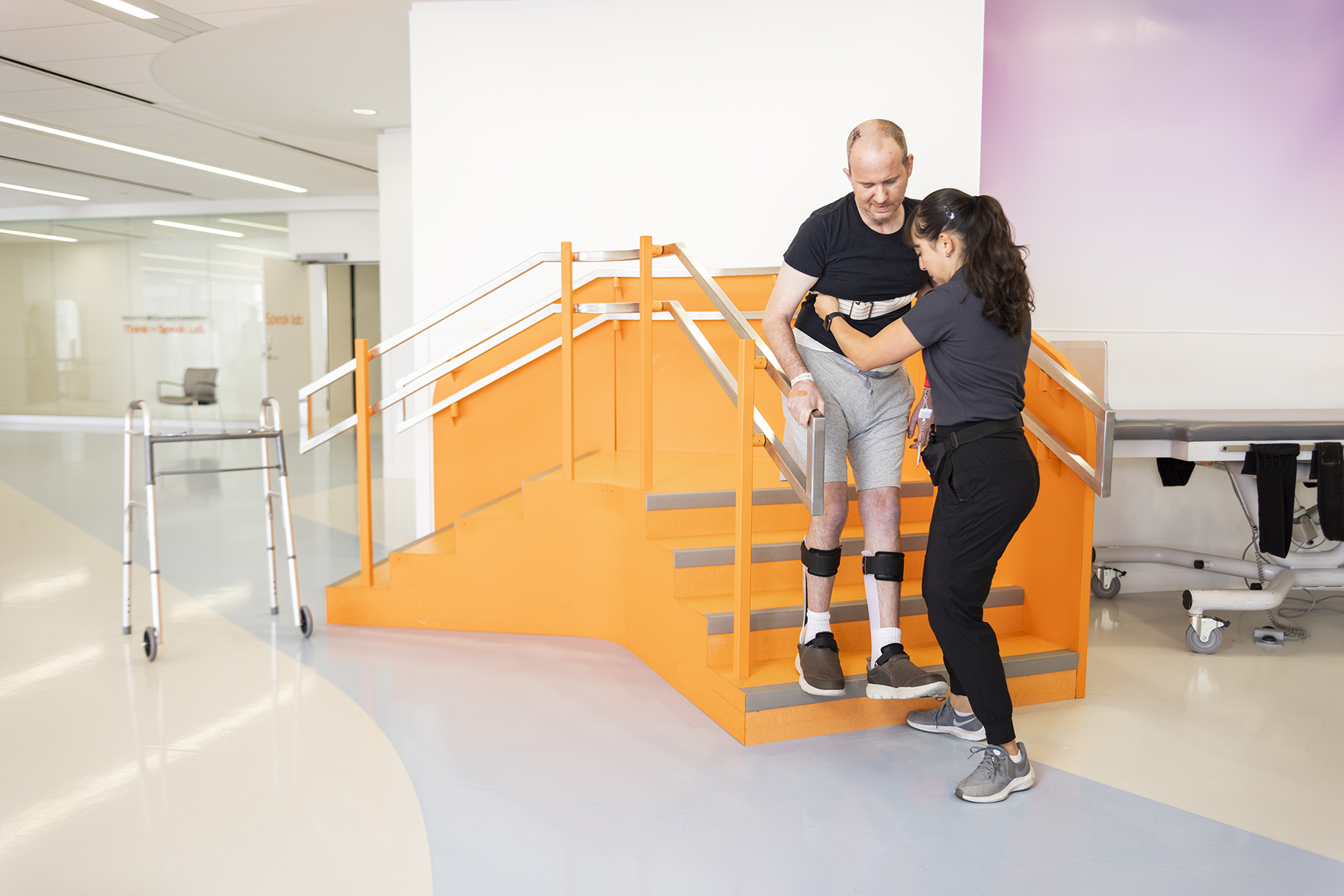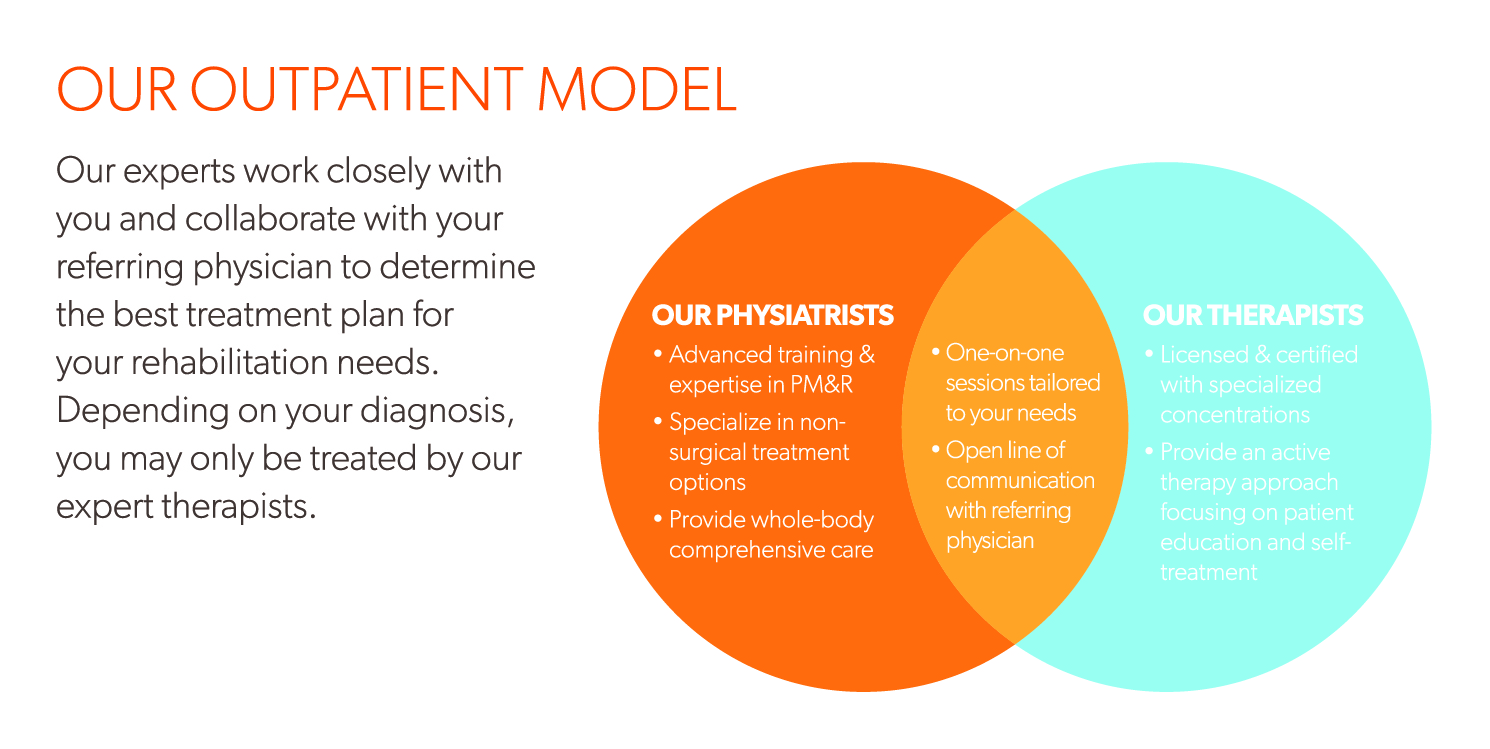Body
After a traumatic injury, diagnosis of a chronic condition or an extended hospital stay, many patients and their loved ones ask, “What comes next?”
Rehabilitation often is recommended by a patient’s medical team following stroke, spinal cord injury, traumatic brain injury or limb loss, or as part of adjusting to a chronic condition like cancer. Additionally, it is recommended to treat common injuries and conditions, from arthritis to concussion.
As patients begin rehabilitation, it is important to understand the different levels of care and how they help support patients on their road to recovery. Three levels of care are available at Shirley Ryan AbilityLab — inpatient, day rehabilitation and outpatient — as patients make improvements in their physical and cognitive function and progress through their recovery journey.

Inpatient Rehabilitation
Body
Inpatient rehabilitation often follows a stay in an acute-care hospital, and is geared toward patients who require constant medical monitoring as they continue their recovery following an illness or injury. Through intensive care and therapy, inpatient rehabilitation aims to increase a patient’s activity level each day, restoring function and independence. In fact, the sooner patients begin rehabilitation, the more physical and cognitive ability they will regain.

Rehabilitation hospitals are staffed 24 hours a day by a complete medical team, led by physiatrists — physicians specializing in Physical Medicine and Rehabilitation (PM&R). In addition, patients work with an interdisciplinary care team — such as therapists (physical, occupational, speech-language), nurses, psychologists and other professionals — to support their individual care plan and rehabilitation goals.
Patients with the most complex conditions often require round-the-clock care and have an average length of stay of three weeks, depending on various factors.
Diagnoses typically treated in inpatient care, for both adult and pediatric patients, include:
- Genetic disorders
- Impairments and conditions resulting from cancer and its related treatments
- Limb loss
- Major multiple trauma
- Neurological or neuromuscular disorders, like cerebral palsy (CP)
- Spinal cord injury
- Stroke
- Traumatic and non-traumatic brain injury
After inpatient rehabilitation, patients may continue with therapy to keep improving function, mobility and daily life skills. Care teams will help patients decide if continued rehabilitation is appropriate.
Zooming in: Inpatient Care at Shirley Ryan AbilityLab in Chicago & Around the Country
Shirley Ryan AbilityLab welcomes patients from around the world at its flagship hospital in Chicago and at alliance hospitals throughout Chicagoland and the United States.
Day Rehabilitation
Body
Day rehabilitation is the next level of care for patients beginning to transition back into the community and into their home life — an option for those who no longer need hospitalization but still require intensive, coordinated rehabilitation care. Some patients may skip inpatient rehabilitation and begin with day rehabilitation if they do not require round-the-clock medical care at the onset of their rehabilitation treatment.
The goal of day rehabilitation is to help patients regain their highest level of function, as well as return to daily life activities, such as parenting, work, school, volunteering and other community activities. Experienced professionals work closely with patients to develop a personalized treatment plan based on their goals. Team members provide daily communication about a patient’s status, regularly evaluate progress and revise treatment plans accordingly.
The intensity of individualized day rehabilitation is modified based on clinical recommendations, as well as an individual’s insurance plan, to maximize program benefits. For example, some programs may consist of three hours of therapy per day, two to three days per week. For others, a program may be designed to include six hours of therapy per day, five days per week.
Zooming in: Day Rehabilitation at Shirley Ryan AbilityLab
Shirley Ryan AbilityLab has one of the largest DayRehab Programs of its kind, setting the standard for day rehabilitation. With five locations around Chicagoland, see if a Shirley Ryan AbilityLab DayRehab Center is right for you.
Outpatient Rehabilitation
Body
Outpatient rehabilitation is another level of care for patients who may benefit from continuing rehabilitation after inpatient or day rehabilitation.
Additionally, depending on the nature of their injury or condition, some patients may skip inpatient rehabilitation and day rehabilitation and begin with outpatient care, including those who have experienced orthopedic conditions or injuries like ankle sprains, hip injuries, knee pain and herniated discs; sports-related injuries; chronic pain; or who require post-surgical therapy.
Each patient’s treatment plan is unique, and physiatrists and therapists collaborate and integrate evidence-based care. Patients are very involved in their care plans as well, and outpatient services may include:
- Physical, occupational and/or speech-language therapy
- Fitting and use of assistive mobility devices (such as wheelchairs), custom prosthetics or orthotics
- Practice with assistive technology (for communication, for example)

Zooming in: Outpatient Rehabilitation at Shirley Ryan AbilityLab
At Shirley Ryan AbilityLab, each outpatient session is 45 minutes. Patients work one-on-one with experienced professionals, many with additional certifications in specialties such as pain management, orthopedics, sports medicine, arthritis care, pediatrics, geriatrics and neurology.
See if Shirley Ryan AbilityLab outpatient therapy is right for you.
Finding the Right Level of Care for You
Body
Fill out this form to determine the right level of care for you or your loved one — inpatient, day rehabilitation or outpatient. After filling out our online form, a representative will follow up to assist you.

